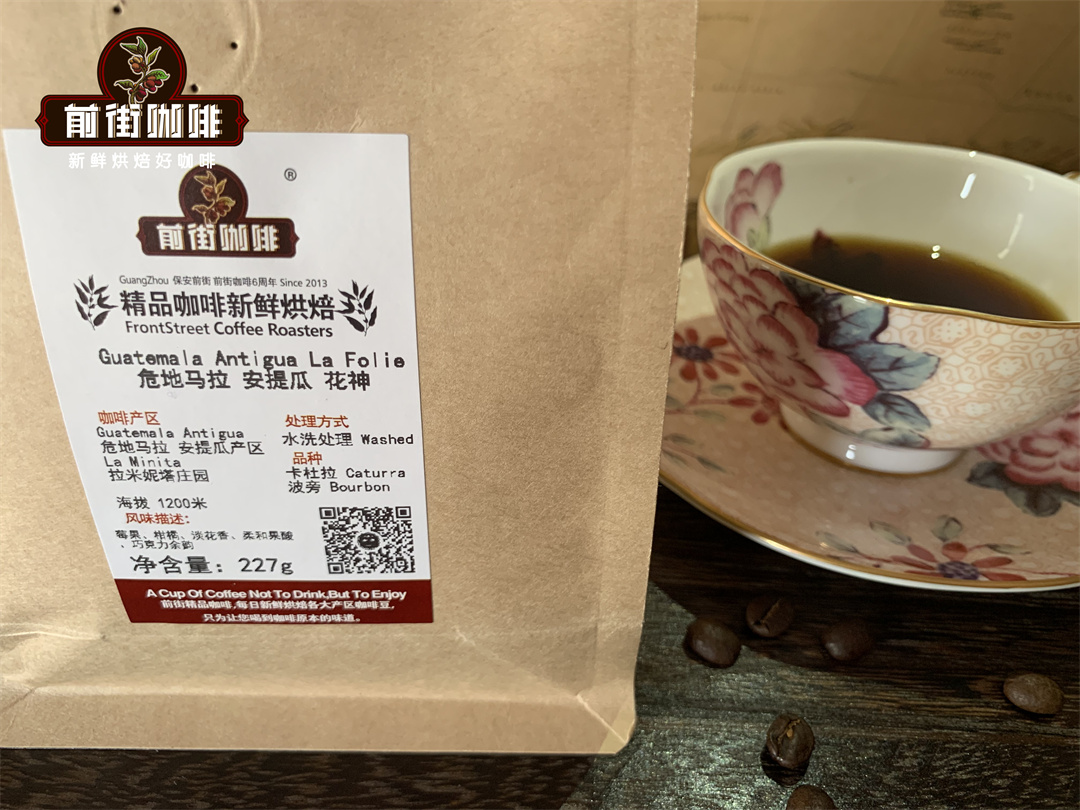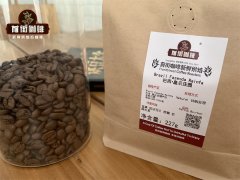What is the difference between the coffee beans of Antigua and Vivette Nan fruit producing areas in Guatemala?
The highlands of Guatemala produce some of the best and most distinctive coffees in the world. The mountain basin around the simple and beautiful colonial city of Antigua Guatemala produces the most outstanding of these highland coffees: Guatemala Antigua, which combines complex nuances (tobacco, spices, flowers, occasionally chocolate) and acidity, from mild brightness to strong acidity.
Other Guatemalan coffees, perhaps because they are more exposed to wet marine weather than the alpine-protected Antigua basin, tend to show slightly softer, usually less powerful, but equally complex nuances. These softer Guatemala include Cobb á n, which is praised for its plump body and soft, deep, round contours, Huehuetenango from the slopes of the Central Mountains facing the Caribbean Sea, and San Marcos coffee from the slopes facing the Pacific Ocean. Coffee from the basin around Lake Attila in south-central Guatemala usually has the same complex nuances as Antigua, but the wine is lighter and brighter.

There are many excellent Guatemalan estates. To name just a few: San Sebastian, Rattasita, San Rafael Urias, Pastore and Las Nubes in the Antigua Valley. In Huehuetenango Santa Cecilia, Huixoc and El Coyegual. In the Coban area Yaxbatz, Los Alpes and El Recreo. In San Marcos, dos Marias.
Huehuetenango and Coban are mainly small farmer coffee, but transportation difficulties and wet weather during harvest may affect the quality. Perhaps the best smallholder Guatemalan coffee comes from farmers in the Lake Attilan basin, who are organized into cooperatives, run their own factories and produce well-prepared coffee. These cooperatives gather near lakeside towns such as San Juan Laguna, San Luca Stolliman and San Diego Attland. The San Juan Laguna Cooperative sells its premium coffee under the poetic name "La Voz que Clama en el Desierto". The Attilan Lake Cooperative produces coffee at the end of the right environment: organically grown in the canopy of dense, bird-sheltered native trees and plants. The coffee is processed enthusiastically and precisely, although the delay in delivering freshly picked coffee fruits from the hillside to the cooperative factory sometimes brings slight, dazzling fermentation distortions to the cup. Atitlan Cooperative Coffee is the perfect choice for those who seek cup quality and grow in perfect harmony with the wishes of the earth and people on earth.
The highest grade of Guatemalan coffee is Strictly Hard Bean (SHB). Regional designated coffee (Antigua, Atitlan, Cobb á n, etc.) has been tasted and approved in accordance with the flavor characteristics standards established by the Guatemalan Coffee Association ANACAFE for these areas. Coffee that does not meet the criteria of regional flavor can only be sold as Strictly Hard Bean without a regional name.
In general, Guatemala retains more traditional typica and bourbon varieties of Arabica coffee than many other Latin American growers, which may be the reason for the generally superior complexity of Guatemalan cups. Most Guatemalan coffee is grown in the shade, from the tightly managed shade of large farms to bushes accidentally found by small growers.
Important Notice :
前街咖啡 FrontStreet Coffee has moved to new addredd:
FrontStreet Coffee Address: 315,Donghua East Road,GuangZhou
Tel:020 38364473
- Prev

Why is the acidity of Brazilian specialty coffee relatively low?
Brazil is not only the largest coffee producer in the world, but also the most sophisticated. It turns out that everything from mass-produced coffee to the cheapest coffee in the world, to elegant coffee known as the origin of the world's best espresso brewing, has been proven. In Brazil, four different processing methods are used to remove fruit from beans, and on the same farm during the same harvest period.
- Next

How to use a French kettle how to make a good Brazilian coffee
What's the best coffee in the French kettle? To a large extent, this can be attributed to personal preference, but generally speaking, medium and dark baked beans are the best choice. The following is Qianjie Coffee to show you the basic method of pressing the pot with French pressure filter coffee. The first thing you need to do to preheat the press is to preheat the French filter press. This is an important step in all coffee brewing methods. Beforehand
Related
- What brand of black coffee is the most authentic and delicious? what are the characteristics of the flavor of the authentic Rose Summer Black Coffee?
- Introduction to the principle and characteristics of the correct use of mocha pot A detailed course of mocha pot brewing coffee is described in five steps.
- Which is better, decaf or regular coffee? how is decaf made?
- How much is a bag of four cat coffee?
- How about four Cat Coffee or Nestle Coffee? why is it a cheap scam?
- Which is better, Yunnan four Cats Coffee or Nestle Coffee? How about cat coffee? is it a fake scam? why is it so cheap?
- How about Cat Coffee? what grade is a hoax? which instant coffee tastes better, four Cat Coffee, Nestle Coffee or G7 coffee?
- Process flow chart of coffee making-Starbucks coffee making process what coffee tastes good at Starbucks
- The top ten best coffee beans in the world Rose summer coffee or Tanzanian coffee tastes good
- Yunnan four cat coffee is good to drink?_four cat coffee is a big brand? four cat blue mountain coffee is fake?

